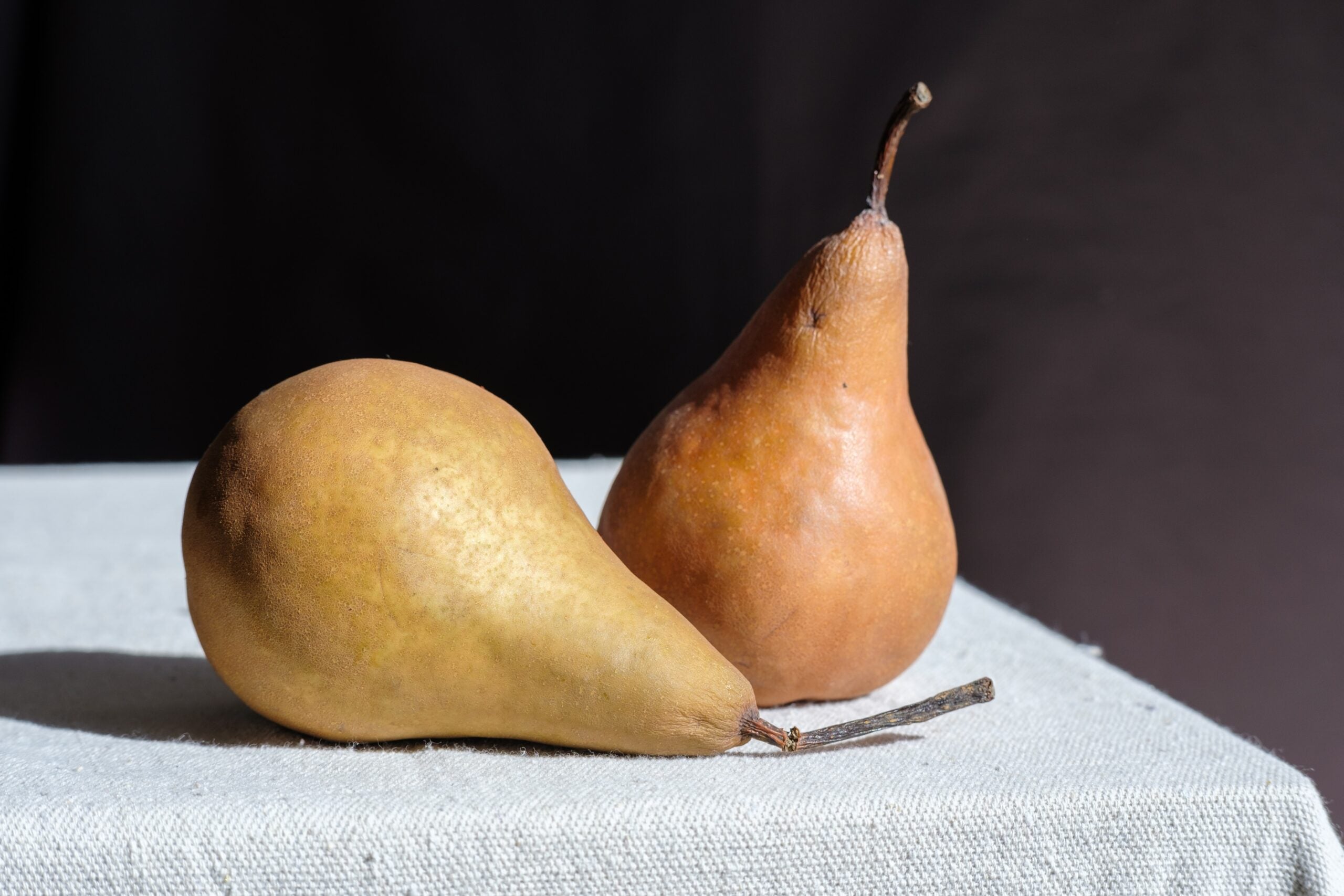The Pear Primer: How to Choose, Pick, and Ripen Pears

(Photo: Garreth Paul on Unsplash)
“There are only 10 minutes in the life of a pear when it is perfect to eat,” Ralph Waldo Emerson once quipped. His statement probably rings true if you’ve ever chomped down on a hard, underripe pear or gotten a mealy mouthful of overripe fruit. But it doesn’t have to be this way. We’ve put together some tips for finding peak pear satisfaction, including how to ripen pears at home.
“Pears are one of the few fruits harvested when they’re mature but not ripe — it’s after harvest that the starch begins to convert to sugar and the fruit ripens,” explains Cristie Mather, a spokeswoman for the nonprofit marketing organization Pear Bureau Northwest. “Ideally, you’ll find pears in varying degrees of ripeness when you’re shopping, so you can choose some that are ready to eat and others that can finish ripening at home.”
To ripen pears at home, keep them at room temperature until the necks have a little give, recommends Mather. “Pears ripen from the inside out, so if you wait until the wider part feels ripe, they might be a little too soft.” To stop the ripening process, put the pears in the fridge, where they’ll stay tender and juicy for three to five days.
A Guide to Pear Varieties
Anjou, Red Anjou
Description Egg-shaped with smooth skins that don’t change color as they ripen. Very juicy.
Best Uses Eat whole as snacks or use to top salads and sandwiches.
Bartlett, Red Bartlett, Williams
Description Slightly nubby skins turn yellow or bright red when ripe; flesh is juicy and buttery.
Best Uses Try on cereal, with cheese, or in baked goods. Great for canning.
Bosc
Description Russet-hued with an elongated neck. Boscs have the highest sugar content of commercially sold pears.
Best Uses Bakers and pastry chefs choose Boscs for their firm, spicy flesh and elegant shape.
Comice
Description Thin-skinned with a juicy, custardy flesh; also called Christmas pears.
Best Uses Poach, use in baking, or pair with cheese.
Concorde
Description Fragrant with a faint blush to their skins, Concorde pears are a cross between Comice and Conference pears.
Best Uses Their elongated necks and rosy skin make Concordes an attractive choice for baking, poaching, and using in salads.
Forelle
Description Bell-shaped and small with a speckled reddish-green skin. Forelles are the most seasonally sensitive pears—they don’t ripen well after storage.
Best Uses Savor as a snack or sliced into a salad.
Seckel
Description Small, round, green or reddish pears that are so sweet, they’re sometimes called sugar pears. Usually sold locally as they do not travel or store well.
Best Uses Best eaten raw to enjoy their crisp sweetness.
RELATED: What Are Meyer Lemons and What Should I Do with Them?
Get more of what you love from VT. Follow us on Instagram, Facebook, and Twitter and sign up for our email newsletters.